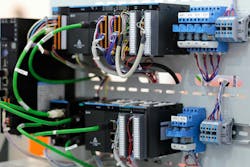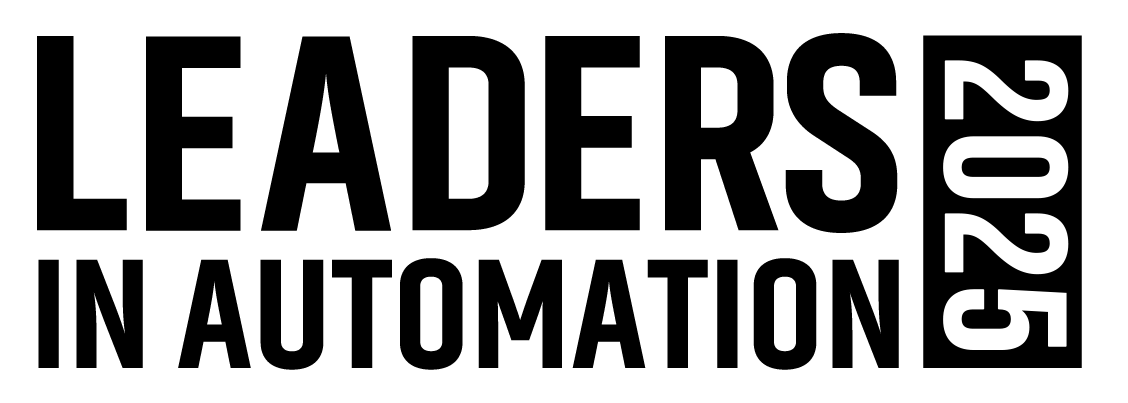Insights on Managing I/O Device Diversity and Data Overload in Industrial IoT
- Manufacturers face difficulties managing different I/O devices that use various protocols (e.g., Modbus, OPC UA and EtherNet/IP), signal types (analog, digital and serial) and generate massive amounts of data that can overwhelm collection systems.
- Unified I/O architectures can provide high-speed, deterministic communication across diverse I/O devices, while edge-of-network devices can interface with multiple fieldbus protocols and aggregate data into unified formats for local processing.
- When deployed for IIoT, I/O communications need built-in firewalls, VPNs, network segmentation and data encryption, combined with strategic filtering based on input from operators and maintenance staff to prioritize critical data and avoid information overload.
One of the most critical aspects of Industrial Internet of Things (IIoT) applications is the process of getting the diverse ecosystem of I/O devices to play nicely to support integrated data exchange and communications. To better understand the major challenges related to I/O device diversity in manufacturing, along with best practice advice on how to resolve them for IIoT applications, Automation World spoke with Azad Jafari (AJ), I/O product manager at Beckhoff USA, and Charlie Norz (CN), director of product management at Wago.
AW: How does the diversity of I/O devices used in a typical manufacturing facility impact the implementation of IIoT?
CN: As the number of devices increases, so does the amount of data generated, which can overwhelm data collection and processing systems. Moreover, these devices often produce different types of signals such as analog, digital and serial, while communicating using various protocols such as Modbus, OPC UA or EtherNet/IP. This variability requires additional infrastructure like protocol converters and middleware to unify and interpret the data streams. Beyond the technical differences, the meaning of sensor data can vary depending on its context. For example, a temperature reading from a motor might indicate a potential failure, while the same reading from an oven could be part of a control loop. These semantic differences make it harder to model and analyze data consistently.
AJ: The wide variety of I/O devices can make implementing IIoT a real challenge, especially when you're working with older systems, different communication protocols and devices with varying performance requirements. The best way to manage this complexity is with a unified, flexible I/O architecture based on EtherCAT. This industrial Ethernet protocol delivers high-speed, deterministic communication and supports a wide range of distributed I/O, making it well-suited for connecting everything from simple digital sensors to advanced motion systems and smart edge devices. EtherCAT-based controllers and I/O terminals that support built-in time synchronization and standard communication protocols like OPC UA and MQTT also streamline communications. They ensure clean, reliable data can be sent directly to an IIoT platform without additional middleware or gateways.
AW: What are the specific challenges related to manufacturers’ need for continuous and reliable data collection from I/O devices in IIoT applications?
AJ: One of the biggest challenges is collecting data from I/O devices reliably and without interruption, especially when you're working with different signal types, varying network conditions, and tight real-time performance needs. That’s why Beckhoff builds on the EtherCAT networking standard to provide fast, deterministic communication with cycle times in the microsecond range to capture synchronized data from distributed I/O devices across the entire plant with precision. For applications that depend on exact timing, such as condition monitoring, energy tracking or high-speed process measurement, I/O systems should also support hardware-based timestamping. This ensures a record of exactly when a signal change happened, which is essential for accurate diagnostics and historical analysis.
One of the first hurdles is determining how to access the signal data from existing equipment. This often involves choosing between extracting data directly from a controller, assuming it stores the necessary information, or tapping into the physical wiring to read the signals in real time.
CN: One of the first hurdles is determining how to access the signal data from existing equipment. This often involves choosing between extracting data directly from a controller, assuming it stores the necessary information, or tapping into the physical wiring to read the signals in real time. Both approaches require careful planning and a deep understanding of the existing infrastructure.
Another major challenge is defining how much data to collect and at what rate. If the sampling rate is too low, critical changes in the system may be missed, leading to skewed or misleading insights. On the other hand, high sampling rates generate large volumes of data that require significant storage capacity and processing power, which can drive up costs. Striking the right balance between data fidelity and resource efficiency is essential.
AW: What are the main security concerns related to the use of I/O in IIoT applications and how can they be mitigated?
CN: I/O devices such as sensors and controllers are often the first points of contact in IIoT systems, and they can be vulnerable if not properly secured. The risks are compounded when integrating legacy systems, which may lack modern security protocols and have limited documentation.
Several mitigation strategies can address these challenges. The first is to secure the device architecture — including controllers — with built-in firewalls, VPNs and intrusion detection systems to protect against unauthorized access. Data encryption and access control help ensure that information transmitted between devices and systems is protected and only accessible to authorized users. Network segmentation and monitoring isolate critical systems and limit the spread of potential threats, while continuous monitoring helps detect and respond to anomalies in real time.
An effective method for I/O interoperability involves the use of edge-of-network devices that can interface with a wide range of fieldbus protocols such as Modbus, EtherNet/IP and Profinet. These devices are designed to collect data from various vendor-specific equipment and aggregate it into a unified format.
Additionally, many users choose to deploy edge-of-network devices on-premises to analyze and contextualize data locally before sending it to offsite cloud-based applications. Together, these measures form a layered defense that helps safeguard sensitive manufacturing data and ensures the integrity and reliability of IIoT systems.
AJ: Ethernet-based communication can be vulnerable to cyber threats such as unauthorized access, intercepted data or control signal manipulation, especially when systems are connected to high-level networks and/or the cloud. To address this, EtherCAT runs in a closed-loop system between the controller and I/O devices, which doesn’t expose field-level communication to the wider network, making it much harder for attackers to interfere.
AW: How do you handle interoperability issues between I/O devices from different vendors within IIoT frameworks?
CN: One of the most effective methods is use of edge-of-network devices that can interface with a wide range of fieldbus protocols such as Modbus, EtherNet/IP and Profinet. These devices are designed to collect data from various vendor-specific equipment and aggregate those data points into a unified format. By doing so, they eliminate the need for each device to communicate directly with a central system using a common protocol, which is often impractical in diverse manufacturing environments.
Once the data is collected, it can be locally analyzed and time-synchronized, allowing for a comprehensive and coherent view of operations across the plant floor. Localized processing not only improves data quality and contextual understanding, but it also reduces the load on cloud infrastructure by filtering and structuring the data before it’s transmitted. This approach enables manufacturers to overcome the challenges of device diversity while maintaining system performance, scalability, and data integrity.
AJ: The EtherCAT standard has ample bandwidth to run multiple protocols simultaneously over the same Ethernet cable, supporting connection and communication with a variety of devices without slowing anything down or losing synchronization. On top of that, the Beckhoff platform supports more than 32 industrial protocols, including Profinet, EtherNet/IP, IO-Link, Modbus, CANopen and OPC UA.
The EtherCAT standard has ample bandwidth to run multiple protocols simultaneously over the same Ethernet cable, supporting connection and communication with a variety of devices without slowing anything down or losing synchronization.
AW: How do you handle the challenge of filtering and prioritizing data from I/O devices to avoid information overload in IIoT applications?
CN: Determining what data is most important can be difficult as it often depends on the specific context of the equipment and processes involved. One of the most effective ways to address this is by engaging the people who operate and maintain the equipment daily, including supervisors, operators and maintenance staff. These individuals possess valuable insights into which signals and metrics truly matter for performance, safety and efficiency.
AJ: EtherCAT offers extremely high bandwidth and deterministic communication so even large volumes of data from distributed I/O devices can be transferred to the controller quickly and reliably. That leaves the real focus to be on deciding what data matters. The TwinCAT automation software platform, for example, lets users filter, prioritize or pre-process data either at the controller or I/O level. This ensures only relevant, time-critical or event-based data is sent to higher-level systems.
AW: What advice would you give manufacturers looking to overcome challenges related to I/O use in IIoT applications?
AJ: Don’t just think about what you need today, but what you might need in five or 10 years. The I/O system plays a big role in that calculation. You’ll want a system that’s flexible, scalable and doesn’t lock you into one vendor or protocol.
CN: Select an I/O system vendor that not only provides the right equipment but also brings deep expertise and support throughout the transformation process. A knowledgeable vendor can help navigate the complexities of integrating diverse I/O devices and protocols, troubleshoot unexpected issues and guide best practices for deployment.



